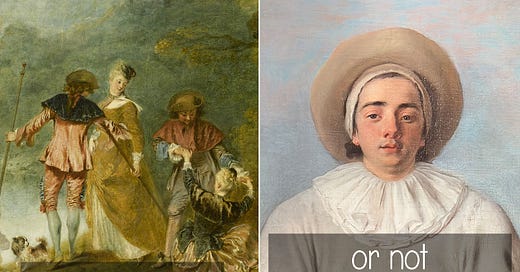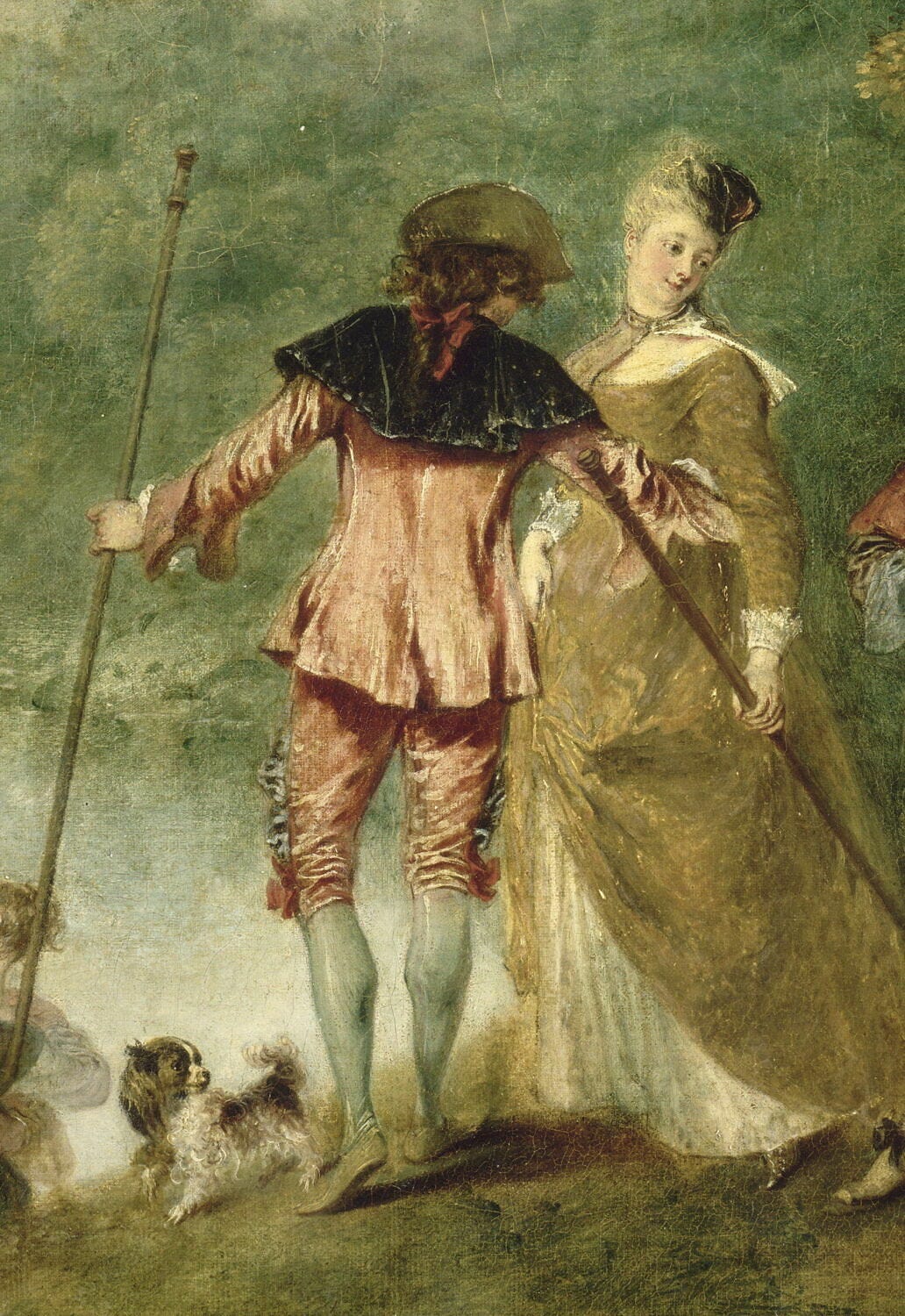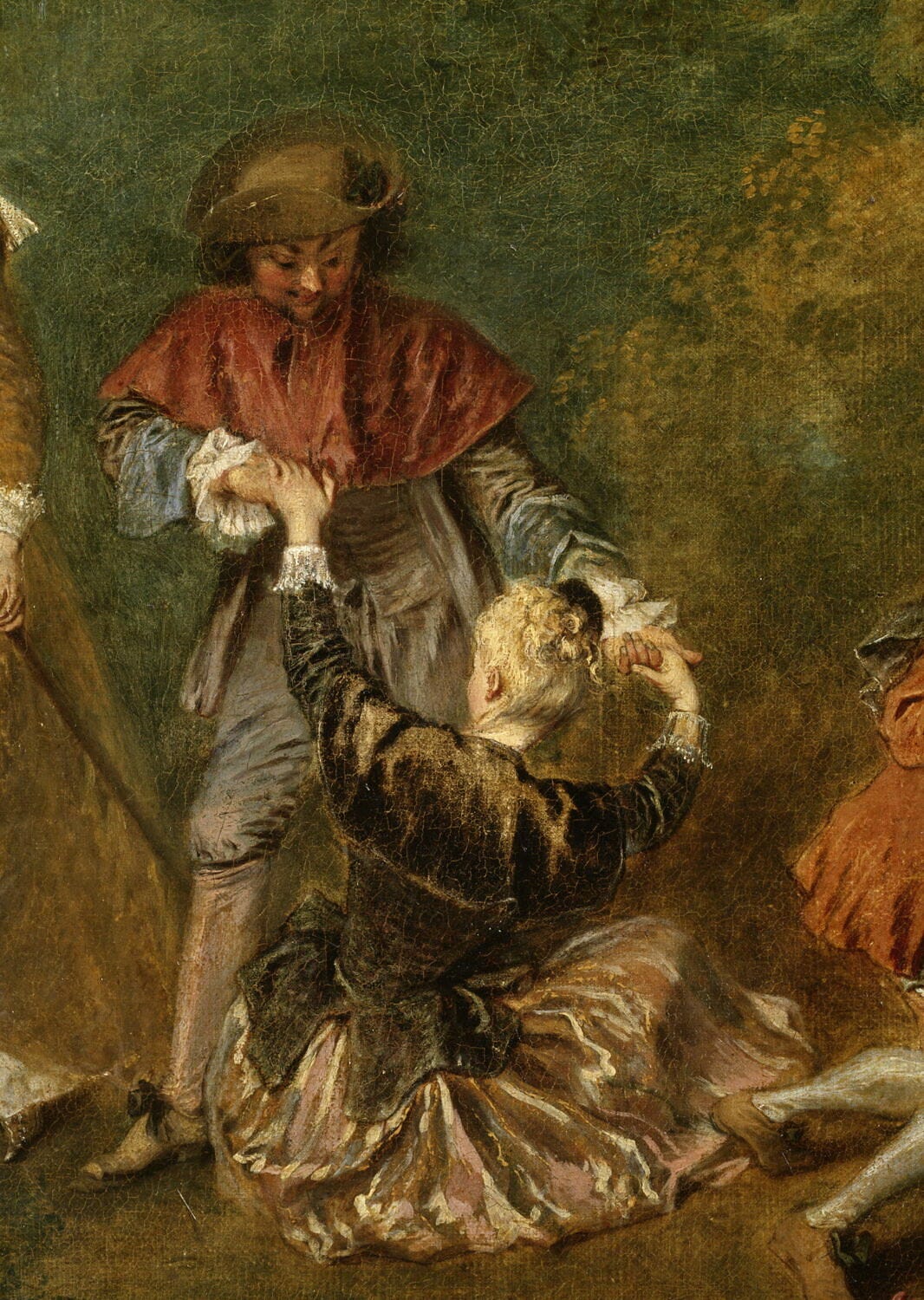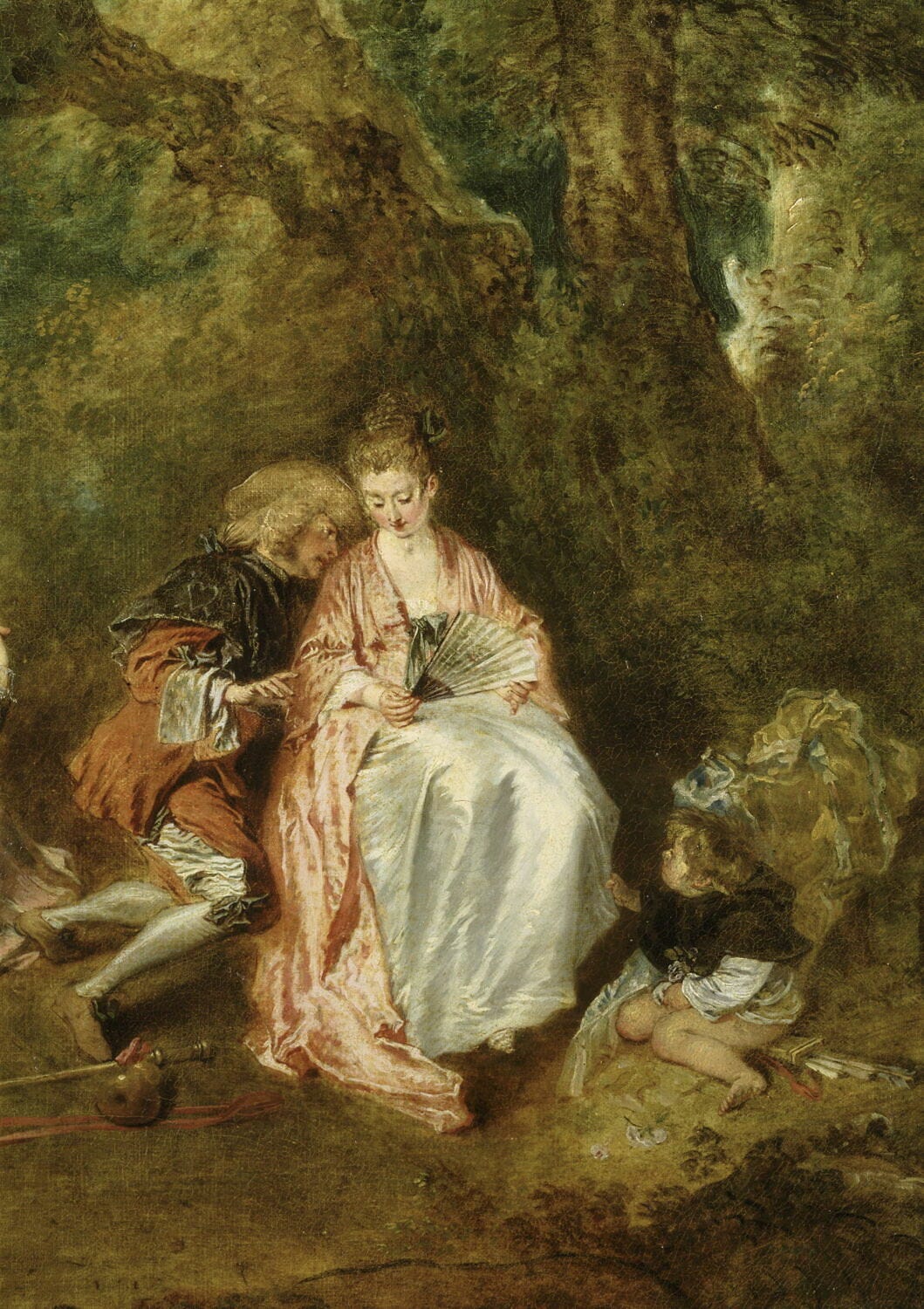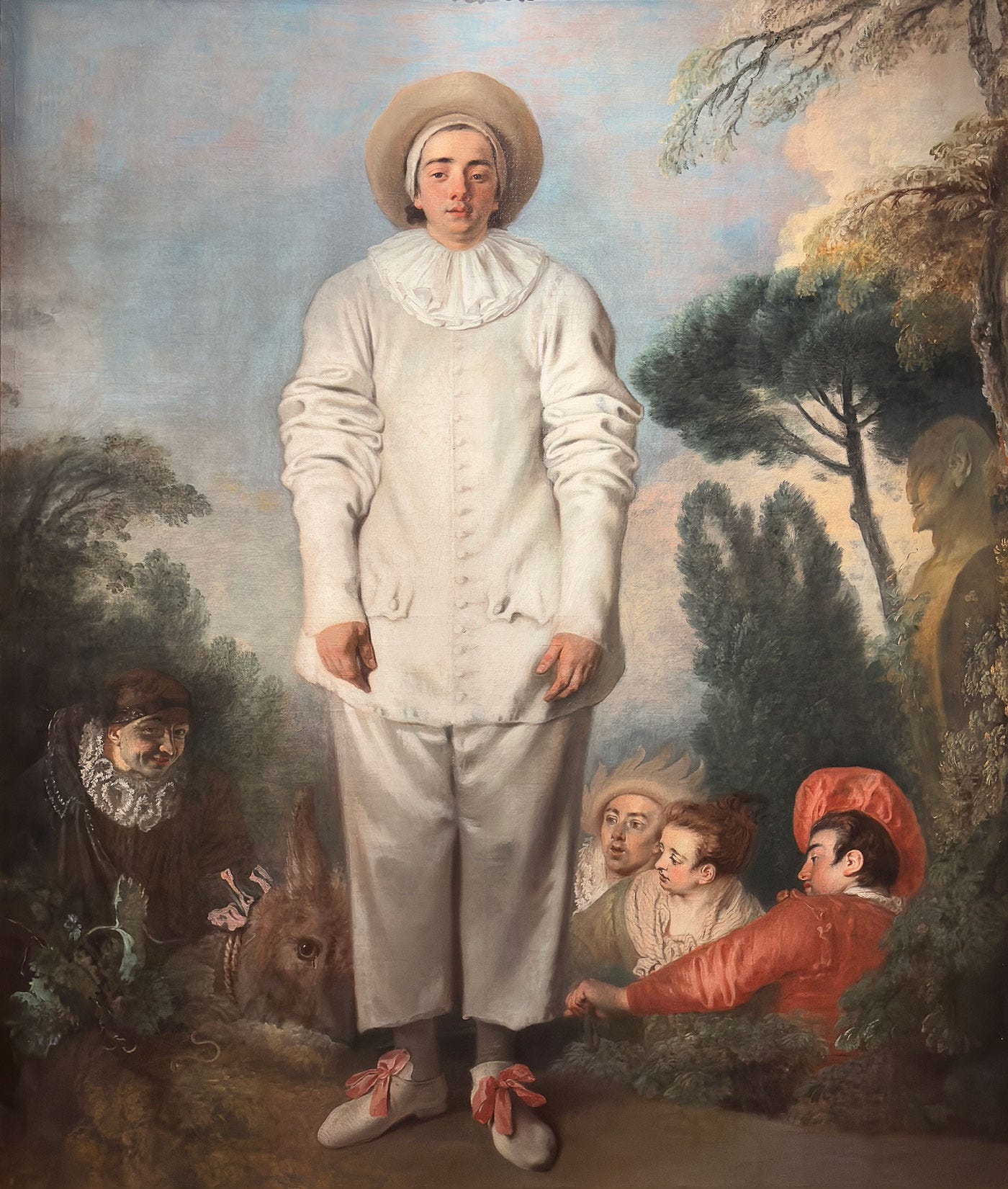I've dreamt of writing a "100 Masterpieces of the Louvre" guidebook for years.
The most challenging part is not writing it but drawing the list.
It involves walking along 9 miles of corridors and choosing between 35,000 artworks.
Some are tiny, others gigantic, and span five millennia of human genius.
Today, we venture into a silent and empty corner of the Louvre.
In a small room, a few meters apart, there are not one but two candidates for "Masterpiece of the Louvre."
Watteau's fête galante
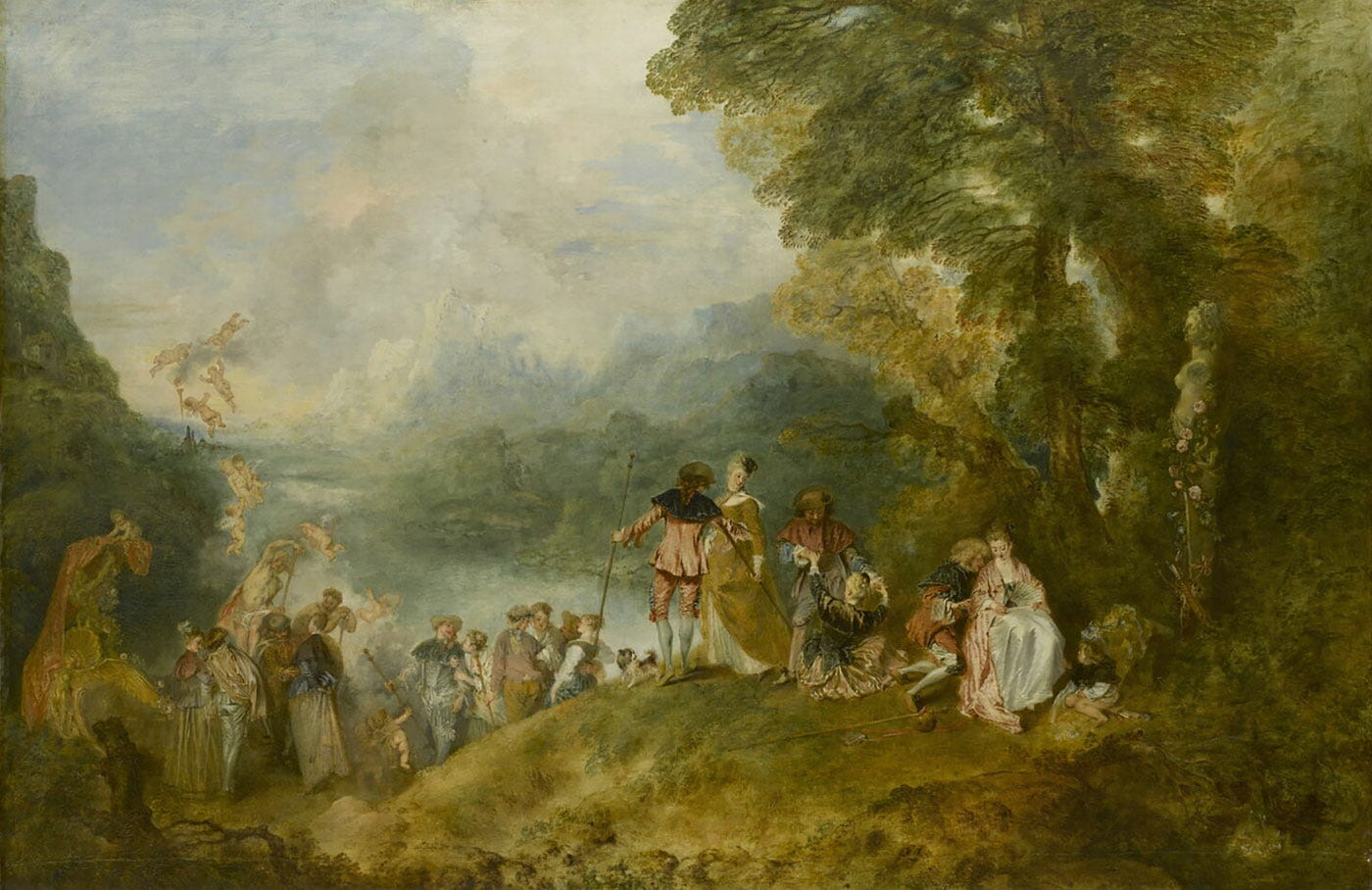
This painting, Pilgrimage to the Isle of Cythera, is so astonishing that the Royal Academy of Painting, not exactly known for its ability to accept change, created a specific category for it, the fête galante.
What does fête galante means?
You probably know gallant to mean 'well dressed man,' but a gallant is a gentleman courteous towards the ladies.
Yet, we mean that if you have a rendez-vous galant, it's a date.
So, understand fête galante as an idyllic garden party where gentlemen are not just well-brought-up boys who listen when their mums tell them they should treat ladies gently.
They are there to woo them. These parties are games of courtship and seduction.
But do not think for a minute that your regular Jean and Jeanne met at a fête galante. This is a pastime for nobles.
Fleeting moments of joy
If these idyllic exterior scenes painted with a vibrant, silky, and colorful brush make you think of the Sunday afternoon luncheons of Impressionism, you're onto something.
One can wonder if Renoir tripped down the stairs, fell through a wormhole, and landed during the last years of Louis XIV's reign.
A theatre of joy to conclude Louis XIV's reign
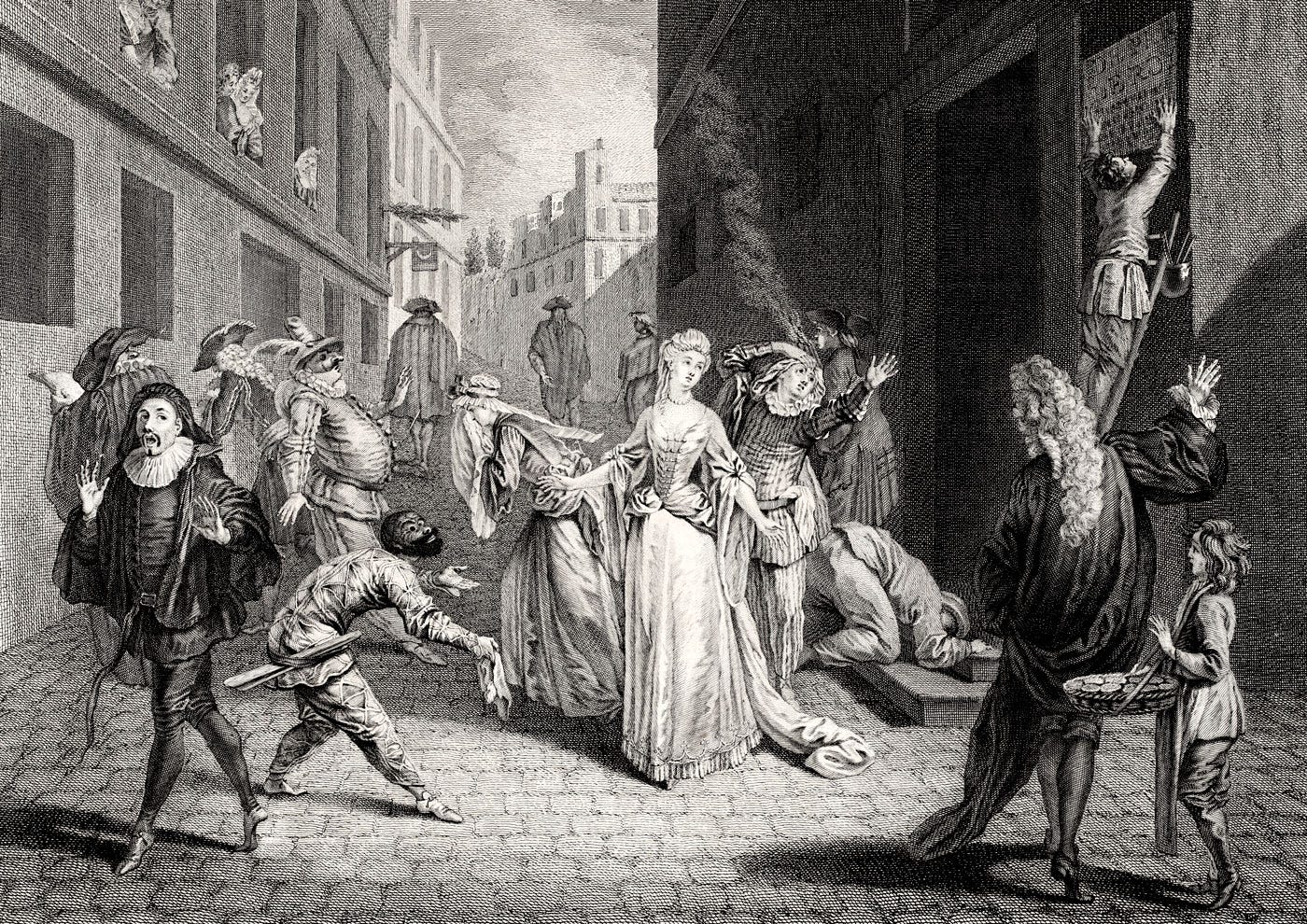
That the fête galante blurs the line between the stage and reality—like a theatre without walls—is one of the many attractive aspects of this painting.
Theatre is essential for our story, but Watteau's youth was not an age of comedy but of tragedy.
In his last years, the Sun King morphed into the Moon, ruling over frigid darkness and famine—in two winters, nearly ten percent of the people of France starved to death.
In reaction, a letter was addressed to Louis XIV:
Your people, whom you should love like your children, die of hunger.
You have destroyed the real forces inside your State to make vain conquests outside it.
Instead of taking money from these poor people, one should give alms and feed them.
He never read it, but Louis' taste for war brought France to the verge of bankruptcy.
It also was an age of religious intolerance—Louis kicked people out of their own country for being Protestants.
A comedian could not receive the last rites and be buried a Christian unless he renounced the comedian profession.
Even the great Molière (think of a French Shakespeare) was refused the last rites, and Louis XIV had to intervene so he could be buried at night.
The King even ordered that the Italian Comedy be closed.
It took one week, in 1715, for the darkness to fade. Versailles was stinkier than usual, as the old man had gangrene and died a rotting corpse.
The Italian Comedy reopened soon after.
As it was for those who survived a world war, the end of Louis XIV's era brought about a release of joy.
Our first masterpiece was painted during this moment of elation.
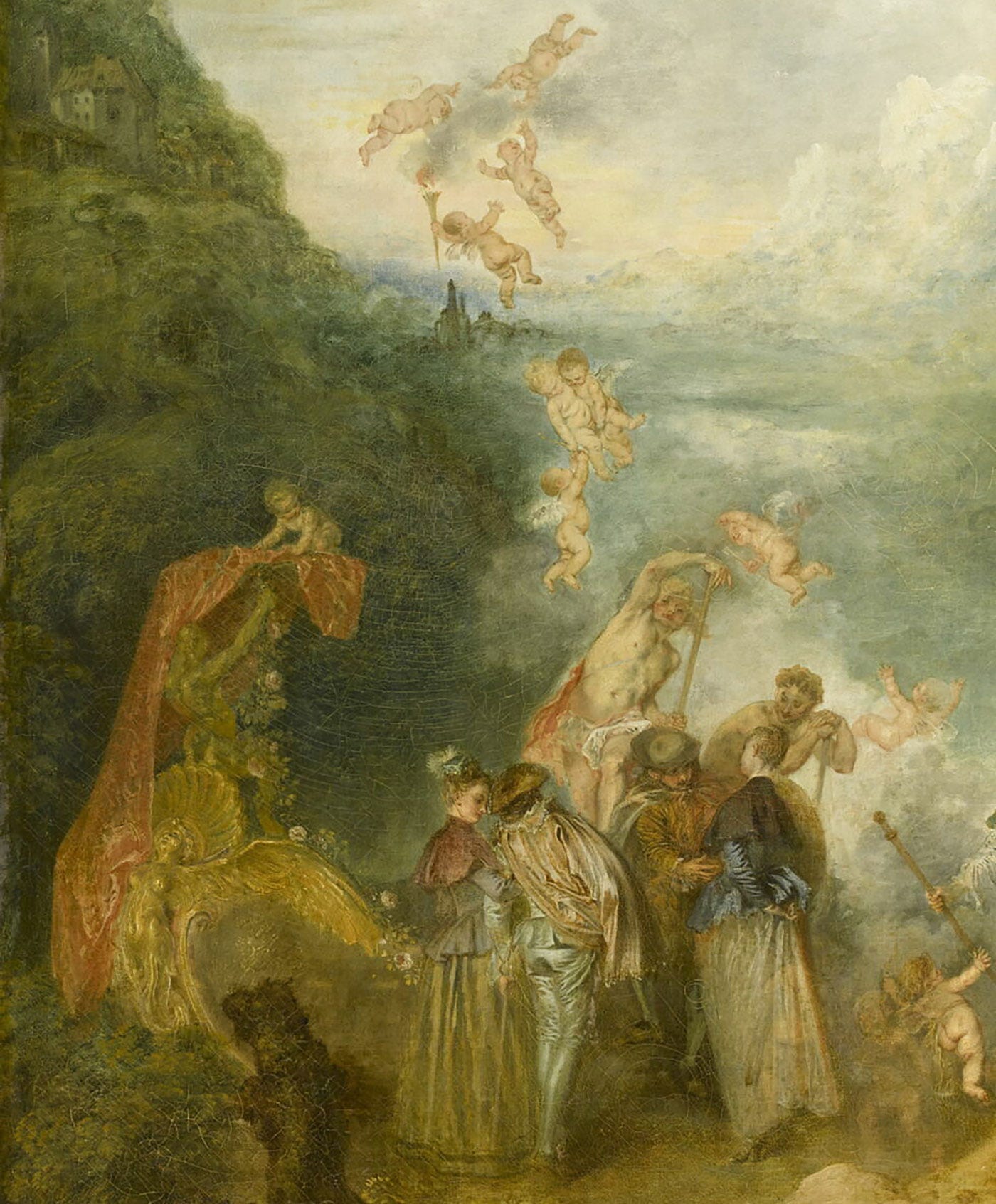
Nostalgia
Back to Cythera—Venus' island, an earthly paradise of love and seduction—there is a degree of longing behind the charm.
Are they going to the island of Love, or returning from it?
The colored mist englobing the scene feels like the blurry, melancholic image one envisions when realizing that the holiday is over and the summer's love story is already a memory.
Art made for Louis XIV usually consisted of severe allegories of power. Watteau opens the theatre's curtains to reveal a new theme: romantic feelings.
If you worry that the author took illegal substances before writing this, the issue is the distance between a digital photo—of course, better than nothing—and the real thing.
The painting is 6 feet wide but the size of the palm of your hand on your screen.
It gleams like satin, yet on screen it glows like the eyes of a fish on a bed of ice.
Without the need for drugs, the Pilgrimage to the Isle of Cythera is pure, heart-stopping magic in real life.
Pilgrimage to the Isle of Cythera
For those in the know, that is not a top 100 painting level painting, but a top 10.
Yes, even in a museum with five Leonardo da Vincis, many Rembrandts, two Vermeers, and everything and anything you can dream of.
And yet, while awed by this masterpiece, a few meters away, there is this life-size painting in which a strange man looks at us, asking why he's not on the list.
Our issue is that it appeared out of nowhere 100 years after Watteau died. Hence, we know little about it.
Is it by Watteau, and who is it anyway?
That's the detective story for tomorrow!
Notes
Musée du Louvre, Guillaume Faroult, Revoir Watteau. "Pierrot", dit le "Gilles", un comédien sans réplique.
Lettre de Fénelon à Louis XIV.


